 It's a topic no one wants to talk about. And everyone hopes will never happen to them. But the reality is that sometimes the unfortunate happens. Do you know what to do when an accident occurs that results in a death?
It's a topic no one wants to talk about. And everyone hopes will never happen to them. But the reality is that sometimes the unfortunate happens. Do you know what to do when an accident occurs that results in a death?
Reporting a Fatality
- OSHA - within 8 hours of finding out
- Call local OSHA office
- Call 24-hour OSHA hotline
- Report online www.osha.gov
- Department Workforce Development (DWD) - within 24-hours of death
- Insurance carrier - within 24-hours of death
Reporting Considerations
- Contact R&R Insurance
- We can help facilitate contacting the carrier and DWD
- Who / how will the family be contacted?
- What is the criteria for the carrier?
Investigation
Law enforcement will be involved! The area will be considered a crime scene, and should be treated as such, until they are done with their investigation. Be sure to preserve all areas and equipment as part of the accident.
- Take photos
- Identify witnesses
- Obtain maintenance records for involved machinery / automobiles
- Document contributing factors: weather, road conditions, construction zone, etc.
Other Consderations
- Crisis management
- Death / marriage certificates
- Media involvement
- Other potential claims: psych treatment for those affected
- Jurisdiction (were employees travelling?)
Looking for crisis management assistence? Contact your Knowledge Broker or safety@rrins.com to get the conversation started.

 Whether embedding a “health-first” mentality into an employer brand proposition or developing a multi-channel communication system to better deliver health messages to all employees, it is becoming increasingly clear: health is declining, individual attitudes are shifting, and the role of the employer in helping health decision-making is becoming more and more important.
Whether embedding a “health-first” mentality into an employer brand proposition or developing a multi-channel communication system to better deliver health messages to all employees, it is becoming increasingly clear: health is declining, individual attitudes are shifting, and the role of the employer in helping health decision-making is becoming more and more important. Did you know that replying to a text message while driving 55mph is like driving blindfolded the length of a football field? Answering a text message takes your eyes off the road for an average of 4.6 seconds - which would be approximately 100 yards.
Did you know that replying to a text message while driving 55mph is like driving blindfolded the length of a football field? Answering a text message takes your eyes off the road for an average of 4.6 seconds - which would be approximately 100 yards. With the US Open being hosted in our backyard this week and a whirlwind of summer events on the horizon, there are hundreds of ticket sale transactions taking place each day. While technology has made it easier to purchase tickets with the click of a mouse, it has also come with a price. Unfortunately, with increased sales come increased scams. Here are a few tips to help you avoid falling into the trap:
With the US Open being hosted in our backyard this week and a whirlwind of summer events on the horizon, there are hundreds of ticket sale transactions taking place each day. While technology has made it easier to purchase tickets with the click of a mouse, it has also come with a price. Unfortunately, with increased sales come increased scams. Here are a few tips to help you avoid falling into the trap: Dave and Nicole are a couple in their early 50’s, with two grown children and one still at home. They have four autos, two homes in Oconomowoc, WI along with a boat, a jet ski, a converted school bus used for tailgating and a moped. Dave is a business owner and Nicole also works for the business. They recently purchased a rental property in Madison, WI, and will act as property managers each fall when they spend their weekends cheering on the Wisconsin Badger football team.
Dave and Nicole are a couple in their early 50’s, with two grown children and one still at home. They have four autos, two homes in Oconomowoc, WI along with a boat, a jet ski, a converted school bus used for tailgating and a moped. Dave is a business owner and Nicole also works for the business. They recently purchased a rental property in Madison, WI, and will act as property managers each fall when they spend their weekends cheering on the Wisconsin Badger football team. 

 Over the last week the WannaCry ransomware was released and spread to over 200,000 computers in over 100 countries throughout the world. Following WannaCry, a new attack called Adylkuzz has crippled computers over 150,000 computers. Both attacks exploit a vulnerability in the Microsoft operating systems that are no longer being supported, even though Microsoft did release a patch in March to protect against an attack. Also this week, a hacking group called Shadow Brokers posted an internet message saying it would release a new trove of cyber-attack tools next month.
Over the last week the WannaCry ransomware was released and spread to over 200,000 computers in over 100 countries throughout the world. Following WannaCry, a new attack called Adylkuzz has crippled computers over 150,000 computers. Both attacks exploit a vulnerability in the Microsoft operating systems that are no longer being supported, even though Microsoft did release a patch in March to protect against an attack. Also this week, a hacking group called Shadow Brokers posted an internet message saying it would release a new trove of cyber-attack tools next month.
 R&R Insurance is proud to congratulate the Arrowhead High School Robotics Team,
R&R Insurance is proud to congratulate the Arrowhead High School Robotics Team,  On May 4, 2017, members of the U.S. House of Representatives voted along party lines to pass an amended version of the American Health Care Act - proposed legislation to repeal and replace the ACA. The AHCA will now move on to be considered by the Senate.
On May 4, 2017, members of the U.S. House of Representatives voted along party lines to pass an amended version of the American Health Care Act - proposed legislation to repeal and replace the ACA. The AHCA will now move on to be considered by the Senate. Do you have employees who travel during their workday? Do you fully understand their exposures? Is it clear when they are driving within the course and scope of employment?
Do you have employees who travel during their workday? Do you fully understand their exposures? Is it clear when they are driving within the course and scope of employment?